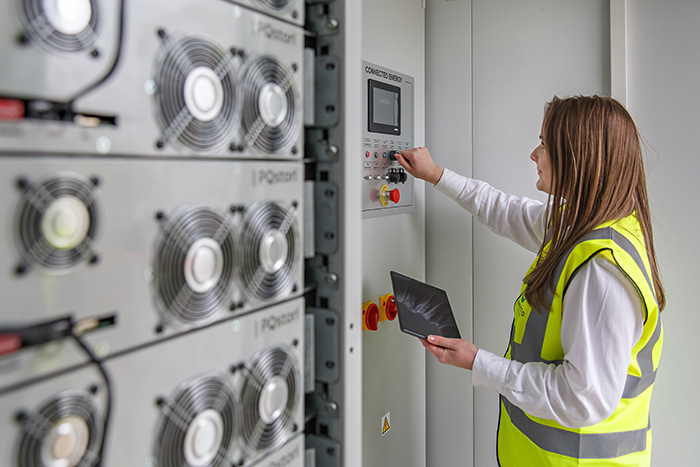BESS Can Unlock Decarbonisation For Energy Managers

Battery energy storage systems can unlock the next steps in decarbonisation strategies for energy managers, according to new data.
A BESS acts as a reservoir, storing energy for use later. This has applications in peak shaving and load management, as well as optimising renewable energy generation such as rooftop solar arrays. It can also help sites overcome grid connection constraints to enable installation of heat pumps and EV charging.
Based on real‑world data from existing operational systems, leading provider Connected Energy calculates that a single 300kW E‑STOR system can save a site 100 MWh of electricity, which is the equivalent of 18 tonnes of carbon emissions each year. In addition, Connected Energy takes batteries from end‑of‑life electric vehicles (EVs), giving them a useful second life in its E‑STOR systems. This further reduces Scope 3 emissions, as each E‑STOR provides a positive carbon benefit of 150 tonnes of CO2e compared with a BESS using brand new batteries.

Initial energy management strategies focused on energy efficiency, but meeting Net Zero targets will require a multi‑faceted approach. BESS can be the answer to several of these challenges. Connected Energy has published a new white paper for energy managers, entitled ‘Battery energy storage - a versatile tool for building decarbonisation’. The guide explores the role of BESS in driving the decarbonisation of buildings, with a focus on supporting energy managers to adopt and implement this new technology.
The white paper outlines how many organisations have already targeted the low‑hanging fruit such as energy efficiency measures like LED lighting, HVAC optimisation and more efficient plant and equipment. This is often supported with employee behavioural change to create a corporate culture of energy efficiency, then followed by introducing smart building technologies.
“The path for energy managers has been quite linear up until now,” added Matthew. “The next stages require different strategies, but a BESS can provide a solution in each case. “Energy managers must think creatively if they are to deliver on the next phases of decarbonisation. “Battery energy storage systems can be a very versatile tool in helping them unlock further carbon savings in a variety of ways.”
To find out more, download the free white paper here: bit.ly/energy‑manager‑guide.

























































